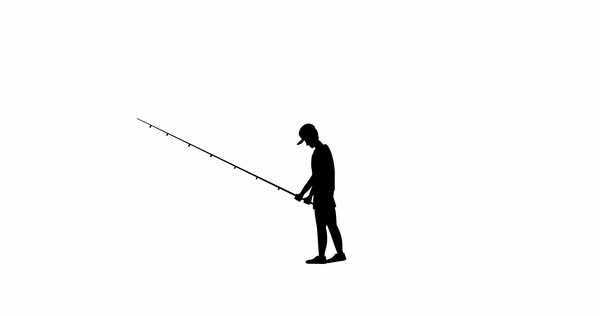.jpg)
Are you looking to improve your bass fishing success?
One key strategy to consider is constantly moving locations while out on the water.
We will explore the behavior of bass fish and why staying in one spot can limit your potential catches.
Learn the benefits of moving locations, such as finding active fish, covering more ground, and adapting to changing conditions.
Discover how you can effectively move locations while bass fishing and increase your chances of a successful day on the water.
Key Takeaways:
- Moving locations while bass fishing can improve your success by helping you find active fish, covering more ground, adapting to changing conditions, and discovering underwater structures.
- Staying in one spot while bass fishing can limit your potential catches, lead to missed opportunities, and waste time and effort.
- To effectively move while bass fishing, use a variety of lures, pay attention to weather and water conditions, keep track of your movements, and be patient and persistent.
Why is Constant Movement Important in Bass Fishing?
Understanding the significance of constant movement in bass fishing is crucial for anglers looking to enhance their success rates. The behavior of bass fish and the reasons behind their movements play a pivotal role in determining the effectiveness of this strategy.
One of the key factors that drives the need for constant movement in bass fishing is the dynamic nature of largemouth bass. Largemouth bass are known for being highly responsive to changes in their environment and are constantly on the move in search of their next meal or ideal conditions. By understanding the movement patterns of bass, anglers can position themselves strategically to intercept feeding opportunities or reaction strikes.
What is the Behavior of Bass Fish?
The behavior of bass fish, particularly largemouth bass, is influenced by various factors such as water temperature, time of day, and available prey. Anglers like Roland Martin and Mort S. have extensively studied bass behavior to gain insights into their feeding habits and movement patterns.
Research has shown that largemouth bass tend to be more active in warmer water temperatures, often becoming more aggressive in their pursuit of prey. This behavior is commonly observed during dawn and dusk, known as the optimal feeding times for these fish. The presence of cover in the form of submerged vegetation or structures like fallen trees and rocks also plays a significant role in the behavior of largemouth bass, providing them with ambush points to hunt for food.
How Can Moving Locations Improve Your Bass Fishing Success?
Exploring different locations while bass fishing, such as Lake X, Lake Y, and Lake Z, can significantly enhance your success by increasing the chances of encountering active fish and uncovering hidden underwater structures.
By moving to various fishing spots, you not only diversify your angling experience but also tap into the unique ecosystems that each lake offers. For example, Lake X might be known for its plentiful largemouth bass population, while Lake Y could be ideal for smallmouth bass enthusiasts. Exploring different areas allows you to adapt your fishing techniques to the specific conditions, whether it’s fishing around reeds and vegetation in one lake or focusing on rocky structures in another.
Finding Active Fish
One of the key advantages of moving locations while bass fishing is the ability to find active fish, including bass, bluegills, and smallmouth bass, which are more likely to respond to bait and lures in new areas.
When searching for active fish species like bass, bluegills, and smallmouth bass, it’s essential to consider various factors that influence their behavior.
- For bass, focusing on structures such as docks, fallen trees, and underwater vegetation can help locate their feeding grounds.
- Bluegills often prefer shallower waters with lots of cover and are commonly found near banks or in areas with aquatic plants.
- Smallmouth bass, on the other hand, tend to inhabit rocky areas and deeper waters, making them more challenging to pinpoint but rewarding when targeted accurately.
Covering More Ground
Moving locations allows anglers, like those on the FLW Tour such as Tom Redington, to cover more ground and increase their chances of encountering productive fishing areas like Lake Fork, known for its abundant bass population.
Exploring various spots not only diversifies an angler’s experience but also exposes them to different bass behaviors and feeding patterns. This adaptability is crucial in tournament fishing, where quick adjustments can turn the tide of competition in one’s favor.
Anglers like Tom Redington often emphasize the importance of staying mobile and being open to trying new areas, a strategy that has proven successful in renowned fishing destinations like Lake Fork. This flexibility allows for a strategic advantage over competitors who may stick rigidly to one spot, potentially missing out on hidden hotspots.
Adapting to Changing Conditions
Effective movement in bass fishing enables anglers to adapt to changing conditions, such as fluctuating water temperatures, ensuring that they can target fish more accurately based on the environmental factors at play.
Understanding how water temperature affects bass behavior is crucial for success in fishing. When the water is warmer, bass tend to be more active and may move to shallower areas to feed. On the other hand, during colder temperatures, bass become less active and might retreat to deeper waters. This knowledge allows anglers to adjust their bait presentation and fishing techniques accordingly. By being attuned to these nuances, anglers can increase their chances of a successful catch.
Discovering Underwater Structures
Moving locations can aid in the discovery of valuable underwater structures that serve as hotspots for bass fishing, providing anglers with insights into prime fishing areas and potential ambush points.
When anglers navigate the waters and explore different areas, they have the opportunity to stumble upon hidden underwater formations that are ideal hunting grounds for bass.
These structures can include submerged logs, rocky outcrops, and vegetation patches that create the perfect hiding spots for bass, as they lie in wait for their prey to pass by.
Understanding the layout of these underwater features through structure mapping technology allows anglers to locate prime feeding areas and increase their chances of a successful fishing trip.
What Are the Risks of Staying in One Spot While Bass Fishing?
.jpg)
Remaining in one spot while bass fishing can lead to missed opportunities, as fish may change their behavior or migrate to different areas, reducing the angler’s chances of successful catches.
Stagnant fishing can result in a narrower range of experiences, limiting the angler’s ability to adapt to shifting conditions and patterns. By staying in one location, anglers risk overlooking new feeding grounds or hotspots where bass may be active.
- This lack of mobility means that the chances of encountering schools of bass or targeting more active fish diminish as the day progresses.
- Not moving around can equate to missing out on crucial information that other anglers who explore different areas might gather.
Consequently, a static approach undermines the dynamic nature of bass fishing, impeding the angler’s capacity to maximize their potential catches.”
Limited Potential Catches
Staying in one spot may result in limited potential catches, a concern especially prevalent in professional fishing tours where maximizing catch opportunities is crucial for success.
Professional anglers understand the significance of constantly seeking new locations and adapting to changing conditions to improve their chances of landing the prized catches.
During intense competitive angling scenarios, every second counts, and a lack of action can mean missed opportunities to secure crucial points that may determine tournament outcomes.
Successful anglers assess risks and benefits, constantly evaluating whether to move to another area or stick with their current strategy based on real-time observations and analysis of their surroundings.
Missed Opportunities
Remaining in one spot increases the likelihood of missed opportunities to target specific fish species, like bass, that may be actively feeding or responding to lures such as the Parachute Adams.
When anglers remain stationary, they risk overlooking crucial cues from the environment that could lead them to more productive fishing grounds. Bass, known for their elusive nature, can quickly change their feeding patterns and locations based on various factors such as water temperature and baitfish movement.
By staying adaptable and responsive to these changes, anglers increase their chances of presenting the right lure at the right time in the right place, maximizing their catch potential. Techniques like jigging or using topwater lures can entice bass that may otherwise go unnoticed during a static fishing approach.
Wasted Time and Effort
Persisting in one spot can lead to wasted time and effort for anglers seeking productive bass fishing experiences, highlighting the need to utilize tools like Fishing Apps for location optimization.
Staying anchored in one unfruitful area can result in missed opportunities to reel in that elusive trophy bass, causing frustration and disappointment among anglers.
- By leveraging advanced technology such as Fishing Apps, fishermen can access real-time data on water temperature, current patterns, and fish activity, enabling them to make informed decisions on when and where to relocate for better chances of success.
- These innovative tools not only save time and effort but also enhance the overall fishing experience by guiding anglers to strategic locations that are teeming with bass.
How Can You Effectively Move Locations While Bass Fishing?
.jpg)
Effectively moving locations in bass fishing requires a strategic approach that considers factors like weather conditions, water quality, and the unique characteristics of fishing destinations such as Kentucky Lake and Lake Guntersville.
Weather conditions play a crucial role in determining the movement of bass in different bodies of water. Anglers should monitor factors like temperature, wind direction, and barometric pressure to anticipate fish behavior.
Water quality assessments are essential for identifying areas with optimal oxygen levels, vegetation cover, and baitfish presence, all of which attract bass. Understanding the water clarity and structure helps in pinpointing potential hotspots.
When selecting a destination like Kentucky Lake or Lake Guntersville, analyzing the topography, depths, and seasonal patterns can lead to successful catches. Each lake offers distinct features that require tailored fishing tactics for maximum effectiveness.
Use a Variety of Lures
Utilizing a diverse range of lures, including popular choices like the Royal Wulff, can enhance the effectiveness of location movement in bass fishing by enticing different fish species and adapting to changing conditions.
Having a selection of lures that cater to varying preferences of fish species increases the chances of success in bass fishing excursions. The Royal Wulff, with its vibrant colors and enticing movement, is particularly effective in attracting bass due to its resemblance to natural prey.
What makes the Royal Wulff stand out is its versatility, making it suitable for different water conditions and depths. Whether fishing in clear streams or murky lakes, this lure can entice bass with its realistic appearance and movement.
Pay Attention to Weather and Water Conditions
Monitoring weather patterns and water conditions, such as temperature fluctuations, is essential for successful location movement in bass fishing, ensuring that anglers can adjust their strategies accordingly for optimal results.
Understanding the impact of weather on bass behavior is crucial as temperature changes can significantly affect their feeding patterns and movement.
By staying aware of these conditions, anglers can choose the right lures, depths, and locations to increase their chances of a successful fishing trip.
Adapting fishing techniques to match the changing environment is key, as subtle adjustments in presentation and speed can make a big difference in attracting bites.
Keep Track of Your Movements
Maintaining a record of your movements, inspired by techniques utilized in the FLW Tour and popular fishing spots like Lake Fork, can help anglers analyze their strategies and optimize their location choices for future outings.
By keeping track of where you cast your line, the depth at which you caught fish, and the type of lure you used, you can discern patterns and trends that lead to successful catches. Reflecting on past movements allows you to identify productive areas and understand the behavior of the fish, enhancing your chances of landing more prized catches on your next fishing adventure.
Be Patient and Persistent
Practicing patience and persistence, traits often observed in professional tour anglers, is key to successful location movement in bass fishing, as it allows anglers to explore varied spots thoroughly and adapt their techniques for optimal results.
This dedication to refining skills and the willingness to continuously learn play a significant role in the angler’s ability to overcome challenges on the water.
Developing a deep understanding
of the bass behavior in different environments requires time and effort – traits that are synonymous with successful anglers. By embracing the journey of discovery and remaining persistent, anglers can unlock the secrets of new fishing grounds, honing their craft with each cast.
Frequently Asked Questions
Why should I constantly move while bass fishing?
Constantly moving while bass fishing is crucial for success. Fish are constantly on the move, and staying in one spot limits your potential catches. By moving around, you will be able to find different schools of fish and increase your chances of catching more.
How does constantly moving help me find underwater structures?
Bass are known to move towards underwater structures, such as rocks, trees, and weeds. By constantly moving, you can cover more areas and increase your chances of finding these structures. These structures are where bass tend to hide and offer great opportunities for catching them.
What are the benefits of moving locations while bass fishing?
Moving locations while bass fishing has numerous benefits. Not only does it increase your chances of catching more fish, but it also allows you to explore different areas and find new fishing spots. This can make your fishing experience more exciting and fruitful.
How does constantly moving affect my catch rate?
Research has shown that constantly moving while bass fishing can significantly increase your catch rate. By moving, you are able to cover more areas and find different schools of fish, which can result in more catches. Staying in one spot can limit your potential catches and result in a lower catch rate.
Is it necessary to constantly move while bass fishing?
While it may not be necessary, constantly moving while bass fishing can greatly improve your chances of success. Bass are constantly on the move, and by moving along with them, you can increase your chances of finding and catching them. It may require more effort, but the results are often worth it.
How can I make moving locations easier while bass fishing?
To make moving locations easier while bass fishing, it is important to plan ahead and have a game plan in mind. Look for potential fishing spots on a map or use a fish finder to locate schools of fish. This can save you time and effort while you are out on the water. Additionally, having a portable and lightweight fishing setup can also make moving around easier.








